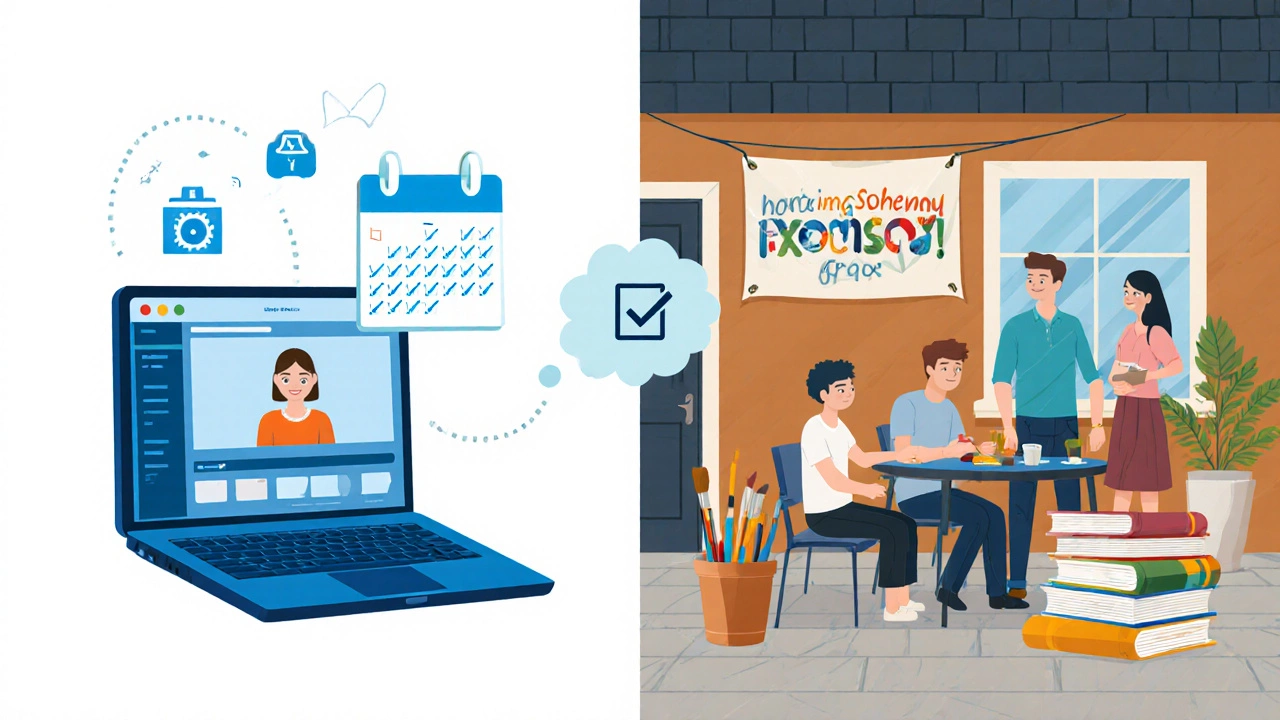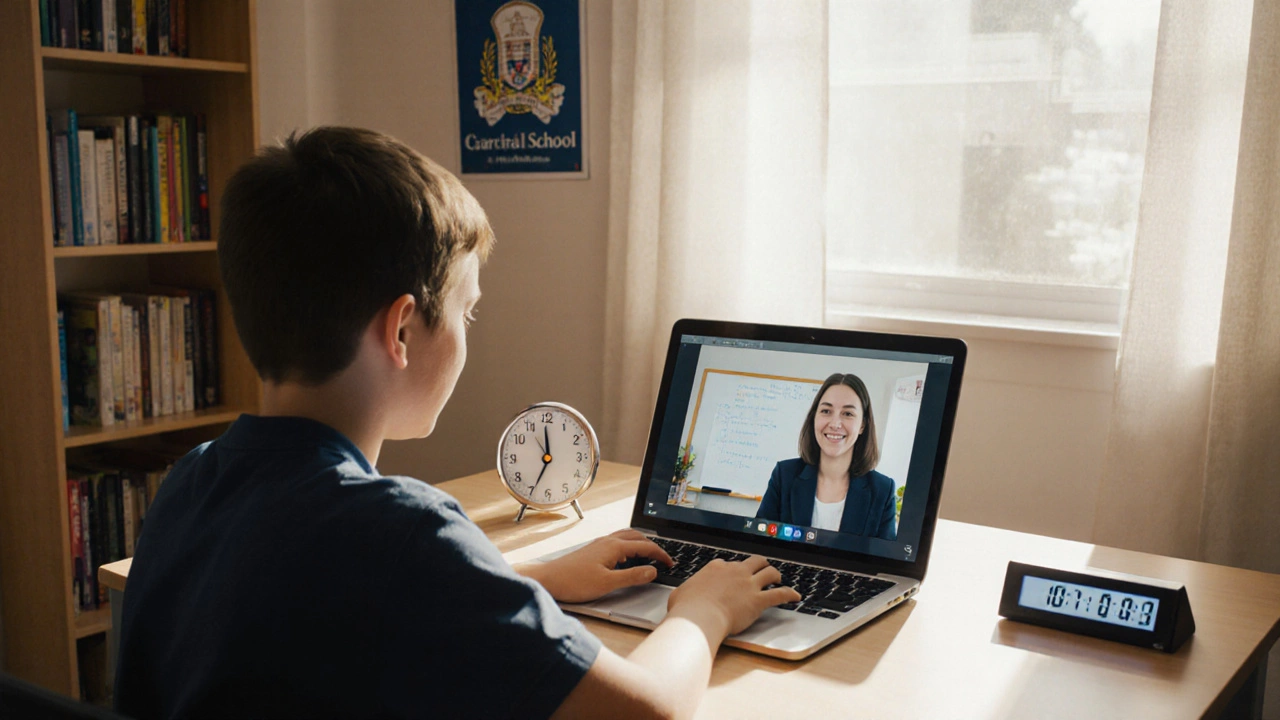Remote Learning vs Homeschooling Decision Guide
Remote Learning
Online education provided by schools with structured curricula and teacher oversight.
Homeschooling
Family-led education with flexible scheduling and curriculum choices.
Recommended Approach:
Why This Fit:
Parents, educators, and students often wonder if remote learning and homeschooling are interchangeable. The short answer is no - the two approaches look similar on the surface but differ in structure, oversight, and day‑to‑day experience. This guide breaks down each model, highlights the biggest contrasts, and helps you decide which fits your family’s needs.
What Is Remote Learning?
Remote learning is a mode of education where instruction is delivered via the internet, allowing students to attend classes from any location. Schools that offer remote learning usually follow the same curriculum as their on‑site counterparts, but teachers use video‑conferencing, digital assignments, and learning management systems to keep students engaged.
Key components include a virtual classroom where live lessons happen, a structured curriculum aligned with state standards, and a suite of technology platforms such as Zoom, Google Classroom, or Microsoft Teams. The school’s administration monitors attendance, grades, and compliance much like a traditional brick‑and‑mortar setting.
What Is Homeschooling?
Homeschooling is an educational arrangement where parents or guardians take primary responsibility for teaching their children, often using a custom blend of resources, textbooks, and experiential activities. Unlike remote learning, homeschooling is usually outside the direct daily oversight of a public or private school, though families may still submit progress reports or standardized test results to satisfy state requirements.
Parents act as the main parent involvement driver, designing daily schedules, selecting learning materials, and evaluating outcomes. Legal obligations vary by region; many Australian states, for instance, require families to register a homeschooling plan and meet minimum instructional hours.

Key Differences
Below is a side‑by‑side snapshot that captures the most practical distinctions.
| Aspect | Remote Learning | Homeschooling |
|---|---|---|
| Provider | Public or private school offering online classes | Parents/guardians (often supplemented by tutors) |
| Curriculum Control | School‑selected, state‑aligned | Family‑chosen, flexible |
| Daily Structure | Fixed schedule, live virtual sessions | Custom schedule, can be asynchronous |
| Assessment Oversight | Teachers grade, report cards issued | Parents assess, may submit independent test scores |
| Social Interaction | Virtual peer activities, occasional in‑person events | Community groups, co‑ops, extracurricular clubs |
| Regulatory Requirements | School complies with education department | Family must meet state homeschooling statutes |
| Technology Dependence | High - reliable internet, devices, platforms | Variable - can be low-tech or high-tech depending on choice |
Legal and Administrative Considerations
In Australia, each state sets its own homeschooling rules. For example, South Australia requires families to submit a written learning plan annually and prove they’re covering the required learning areas. Remote learning, on the other hand, follows the same registration and reporting procedures as traditional schools, meaning students receive the same statutory certifications.
Both models must satisfy state regulations concerning minimum instructional hours, assessment standards, and record‑keeping. Failing to comply can lead to enrollment warnings or, in extreme cases, legal penalties.

Choosing the Right Path for Your Family
Ask yourself these practical questions:
- Do you need a rigid schedule? Remote learning offers a set timetable that mirrors a regular school day. Homeschooling lets you rearrange subjects around family life.
- How comfortable are you with technology? If your home internet is spotty, a low‑tech homeschooling approach may work better.
- What level of oversight do you prefer? Remote learning provides teacher‑driven monitoring, whereas homeschooling places that responsibility on you.
- Is socialization a priority? Virtual classrooms give daily peer contact, but homeschool families often join co‑ops or sports teams for richer interaction.
Balancing these factors will point you toward the model that aligns with your educational philosophy and logistical reality.
Practical Tips for Success
Regardless of the route you pick, these habits boost learning outcomes:
- Set a dedicated workspace free from distractions. A quiet corner with a sturdy desk helps maintain focus.
- Establish clear daily routines. Even a loose timetable signals to children when it’s time to learn versus play.
- Leverage technology platforms that match your child’s age. Younger kids benefit from visual tools like Seesaw, while secondary students may thrive on Moodle or Canvas.
- Track learning outcomes weekly. Use simple charts or checklists to see progress and adjust the plan quickly.
- Encourage peer interaction. Join local homeschool groups, enroll in virtual study clubs, or schedule video “playdates” with classmates.
- Stay informed about state regulations. Register on relevant education department websites and keep documentation organized.
When parents stay proactive, the line between remote learning and homeschooling blurs - both can deliver strong academic results while fitting family life.
Frequently Asked Questions
Is remote learning considered part of public schooling?
Yes. Most public schools now offer a fully online track that follows the same curriculum and reporting standards as their on‑site programs.
Do homeschooled students have to take standardized tests?
In most Australian states, families must submit results from nationally recognized tests (e.g., NAPLAN) at key stages to demonstrate progress.
Can a child switch between remote learning and homeschooling?
Switching is possible, but families need to inform both the school district and the state education department to keep enrollment records accurate.
What costs are associated with each option?
Remote learning through a public school is usually free, though families may need to purchase devices or internet service. Homeschooling costs vary widely - from low‑budget textbook kits to premium online curricula.
How does socialization differ between the two?
Remote learners interact daily via chat and video, but mostly within the same class. Homeschoolers often rely on community groups, sports, and extracurricular clubs for broader peer exposure.

